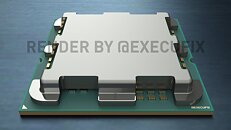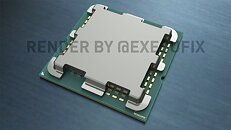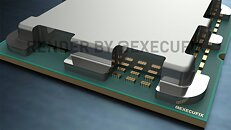- Joined
- Aug 19, 2017
- Messages
- 3,018 (1.07/day)
Last week, we have covered the leak of AMD's upcoming Raphael processor integrated heat spreader (IHS), which featured a rather unique design. While we have made speculations as to why the design was made like that, it seems that we now have an answer to the question. It was previously believed that the unique IHS design was there to protect a double-substrate design, like Intel designed with Skylake-X. However, thanks to the updated design by ExecutableFix, we now know that AMD's design choice for Raphael is based on the simple fact that the IHS needs those cutouts for capacitors, as this seems to be the only place to have them.
As you can see below, there was no room on the LGA side, where the LGA pads are placed, and a lot of speculation suggested that capacitors were placed under the IHS or in IHS cutouts. The latter has proven to be the case according to this leak. You can check out some of the updated renderings in the images below.



View at TechPowerUp Main Site
As you can see below, there was no room on the LGA side, where the LGA pads are placed, and a lot of speculation suggested that capacitors were placed under the IHS or in IHS cutouts. The latter has proven to be the case according to this leak. You can check out some of the updated renderings in the images below.



View at TechPowerUp Main Site







